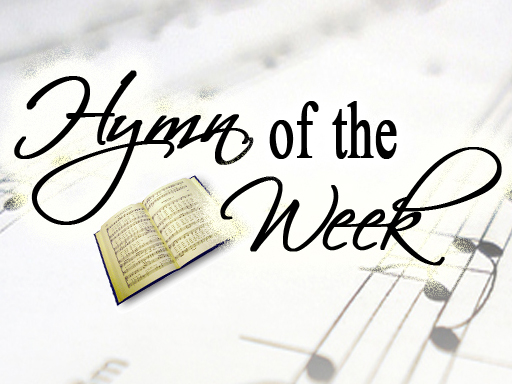The Lorica (Breastplate of St. Patrick)
Author: Attributed to Saint Patrick
Genre: Prayer, 5th – 9th Century
Reading Time for Text: Approx. 4 minutes.
Audio:
This audio is provided by Librivox.org as part The Collected Works of St. Patrick. Running time is 4 minutes.
Audio clip: Adobe Flash Player (version 9 or above) is required to play this audio clip. Download the latest version here. You also need to have JavaScript enabled in your browser.
 Background:
Background:
This text is commonly known as the “Lorica” or “Breastplate of St. Patrick.” Its present form probably dates from the ninth century. However, Dr. Ludwig Bieler, author of The Works of St. Patrick argues that “composition by St. Patrick is a possibility that should not be rashly dismissed” (p. 67). He writes:
“The sentiments expressed as well as certain archaic features in syntax and metre would suggest that the poem is of early (at least sixth-century) date. It may have been handed down orally until, in the ninth century, the form in which it survives was transmitted to writing” (p. 67).
Bieler continues:
“This is one of a number of Irish prayers, called Loricae, some in Latin, some in Gaelic, that were credited with the special power of protecting those who would recite them against all sorts of dangers to the body and soul. Such prayers replaced pagan charms when the Irish accepted the Christian faith” (pp. 67-68).
In a preface to the “Lorica” in the Irish Book of Hymns, a story is recounted of how Patrick and his fellow monks travelled to the village of Tara to preach the gospel. However, enemies of God waited in ambush for them hoping to prevent their mission. It is said that as Patrick and his men recited the words of this prayer, they appeared as deer to their enemies and were able to pass safely on to the village of Tara. Thus, the traditional title of the prayer, “Faeth Fiada,” is often interpreted as ‘The Deer’s Cry,” though according to Bieler, “originally it probably meant ‘magic mist’ — an incantation that was supposed to make a person invisible” (p. 67).
Note that the text for the audio is a translation by Cecil Frances Alexander who translated the prose of this hymn into a beautiful metrical version in 1889; it is generally sung to the traditional Irish tune called St. Patrick. A link to the words and music can be found on our St. Patrick’s Day Songs page as “St. Patrick’s Breastplate.”
The below translation was made by Ludwig Bieler (1953) who says he relied substantially on an earlier translation by W. Stokes and J. Strachan.
Text:
I arise to-day
through a mighty strength, the invocation of the Trinity,
through the belief in the Threeness,
through confession of the Oneness
towards the Creator.
I arise to-day
through the strength of Christ with His Baptism,
through the strength of His Crucifixion with His Burial,
through the strength of His Resurrection with His Ascension,
through the strength of His descent for the Judgment of Doom.
I arise to-day
through the strength of the love of Cherubim,
in obedience of Angels,
in the service of Archangels,
in hope of resurrection to meet with reward,
in prayers of Patriarchs,
in predictions of Prophets,
in preaching of Apostles,
in faiths of Confessors,
in innocence of Holy Virgins,
in deeds of righteous men.
I arise to-day
t hrough the strength of Heaven:
light of Sun,
brilliance of Moon,
splendour of Fire,
speed of Lightning,
swiftness of Wind,
depth of Sea,
stability of Earth,
firmness of Rock.
I arise today
through God’s strength to pilot me:
God’s might to uphold me,
God’s wisdom to guide me,
God’s eye to look before me,
God’s ear to hear me,
God’s word to speak for me,
God’s hand to guard me,
God’s way to lie before me,
God’s shield to protect me,
God’s host to secure me
against snares of devils,
against temptations of vices,
against inclinations of nature,
against everyone who shall wish me ill,
afar and anear,
alone and in a crowd.
I summon to-day all these powers between me and these evils —
against every cruel merciless power that may oppose my body and my soul,
against incantations of false prophets,
against black laws of heathenry,
against false laws of heretics,
against craft of idolatry,
against spells of women and smiths and wizards,
against every knowledge that endangers man’s body and soul.
Christ to protect me to-day
against poison, against burning,
against drowning, against wounding,
so that there may come abundance of reward.
Christ with me, Christ before me, Christ behind me,
Christ in me, Christ beneath me, Christ above me,
Christ on my right, Christ on my left,
Christ where I lie, Christ where I sit down, Christ where I arise,
Christ in the heart of every man who thinks of me,
Christ in the mouth of every man who speaks of me,
Christ in every eye that sees me,
Christ in every ear that hears me.
I arise to-day
through a mighty strength, the invocation of the Trinity,
through belief in the Threeness,
through confession of the Oneness,
towards the Creator.
Salvation is of the Lord.
Salvation is of the Lord.
Salvation is of Christ.
May Thy salvation, O Lord, be ever with us.
********************
Back to main St. Patrick’s Day Stories page.
We welcome your questions and feedback. If you are seeking information on St. Patrick’s Day stories that is not found on our website, please contact us.
You may freely use this material if you cite the source and/or link back to this page.






